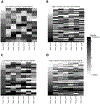Administrative Data Are Unreliable for Ranking Hospital Performance Based on Serious Complications After Spine Fusion
- PMID: 33826589
- PMCID: PMC8363514
- DOI: 10.1097/BRS.0000000000004017
Administrative Data Are Unreliable for Ranking Hospital Performance Based on Serious Complications After Spine Fusion
Abstract
Study design: Retrospective analysis of administrative billing data.
Objective: To evaluate the extent to which a metric of serious complications determined from administrative data can reliably profile hospital performance in spine fusion surgery.
Summary of background data: While payers are increasingly focused on implementing pay-for-performance measures, quality metrics must reliably reflect true differences in performance among the hospitals profiled.
Methods: We used State Inpatient Databases from nine states to characterize serious complications after elective cervical and thoracolumbar fusion. Hierarchical logistic regression was used to risk-adjust differences in case mix, along with variability from low case volumes. The reliability of this risk-stratified complication rate (RSCR) was assessed as the variation between hospitals that was not due to chance alone, calculated separately by fusion type and year. Finally, we estimated the proportion of hospitals that had sufficient case volumes to obtain reliable (>0.7) complication estimates.
Results: From 2010 to 2017 we identified 154,078 cervical and 213,133 thoracolumbar fusion surgeries. 4.2% of cervical fusion patients had a serious complication, and the median RSCR increased from 4.2% in 2010 to 5.5% in 2017. The reliability of the RSCR for cervical fusion was poor and varied substantially by year (range 0.04-0.28). Overall, 7.7% of thoracolumbar fusion patients experienced a serious complication, and the RSCR varied from 6.8% to 8.0% during the study period. Although still modest, the RSCR reliability was higher for thoracolumbar fusion (range 0.16-0.43). Depending on the study year, 0% to 4.5% of hospitals had sufficient cervical fusion case volume to report reliable (>0.7) estimates, whereas 15% to 36% of hospitals reached this threshold for thoracolumbar fusion.
Conclusion: A metric of serious complications was unreliable for benchmarking cervical fusion outcomes and only modestly reliable for thoracolumbar fusion. When assessed using administrative datasets, these measures appear inappropriate for high-stakes applications, such as public reporting or pay-for-performance.Level of Evidence: 3.
Copyright © 2021 Wolters Kluwer Health, Inc. All rights reserved.
Figures



Similar articles
-
Comparison of cost and complication rates for profiling hospital performance in lumbar fusion for spondylolisthesis.Spine J. 2021 Dec;21(12):2026-2034. doi: 10.1016/j.spinee.2021.06.014. Epub 2021 Jun 20. Spine J. 2021. PMID: 34161844 Free PMC article.
-
Perioperative neurologic complications during spinal fusion surgery: incidence and trends.Spine J. 2017 Nov;17(11):1611-1624. doi: 10.1016/j.spinee.2017.05.020. Epub 2017 May 17. Spine J. 2017. PMID: 28527755
-
Can the American College of Surgeons Risk Calculator Predict 30-day Complications After Spine Surgery?Spine (Phila Pa 1976). 2020 May 1;45(9):621-628. doi: 10.1097/BRS.0000000000003340. Spine (Phila Pa 1976). 2020. PMID: 31770319
-
Incremental Hospital Cost and Length-of-stay Associated With Treating Adverse Events Among Medicare Beneficiaries Undergoing Cervical Spinal Fusion During Fiscal Year 2013 and 2014.Spine (Phila Pa 1976). 2017 Oct 15;42(20):1578-1586. doi: 10.1097/BRS.0000000000002268. Spine (Phila Pa 1976). 2017. PMID: 28591072
-
Complications in spine surgery.J Neurosurg Spine. 2010 Aug;13(2):144-57. doi: 10.3171/2010.3.SPINE09369. J Neurosurg Spine. 2010. PMID: 20672949 Review.
Cited by
-
Comparison of cost and complication rates for profiling hospital performance in lumbar fusion for spondylolisthesis.Spine J. 2021 Dec;21(12):2026-2034. doi: 10.1016/j.spinee.2021.06.014. Epub 2021 Jun 20. Spine J. 2021. PMID: 34161844 Free PMC article.
References
-
- Healthcare Cost and Utilization Project (HCUP). Statistical Brief #204. Healthcare Cost and Utilization Project (HCUP) Rockville, MD: Agency for Healthcare Research and Quality; 2016. [Available from: www.hcup-us.ahrq.gov/reports/statbriefs/sb204-Most-Expensive-Hospital-Co.... - PubMed
-
- Machado GC, Maher CG, Ferreira PH, Harris IA, Deyo RA, McKay D, et al.Trends, complications, and costs for hospital admission and surgery for lumbar spinal stenosis. Spine (Phila Pa 1976). 2017;42(22):1737–43. - PubMed
-
- Raad M, Donaldson CJ, Dafrawy MHE, Sciubba DM, Riley LH, Neuman BJ, et al.Trends in isolated lumbar spinal stenosis surgery among working US adults aged 40–64 years, 2010–2014. 2018;29(2):169. - PubMed
MeSH terms
Grants and funding
LinkOut - more resources
Full Text Sources
Other Literature Sources
Research Materials

